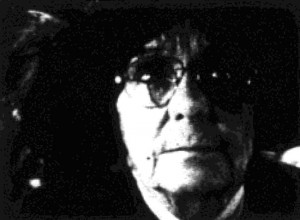
"West Texas by Alan E. Gadney of Sun Valley, Calif. Alan made this film while a student in the Department of Cinema, University of Southern California at Los Angeles, and it is a superb example of student work. The Logistics involved and problems encountered are hard to believe and yet the picture was made in California. This 55-minute 16mm film was awarded a Ten Best Medal, The Charles A. Kinsley Memorial Award, the Scenario Award and the Student Film Award" PSA Journal, Nov. 1970, 38.
"'West Texas Panther Hunt,' by Tom D. Park of Tulsa, Okla., caused the averting of more than one pair of feminine eyes as the dogs closed in on the big cat, which cuffed them back and might have won freedom except for the man behind the gun behind the dogs" American Cinematographer, April, 1938, 173.
"West Virginia, the State Beautiful is organized as a series of scenic vignettes taken during an auto trip eastward on Route 60, known as the Midland Trail .... This route, first proposed by George Washington in 1783, had been upgraded for automobiles in the 1920s and is portrayed here as a source of civic pride. Rev. Snodgrass probably screened his 75-minute travel documentary for church and civic groups. The five excerpts included here begin with the start of the tour in the border town of Kenova, whose name is laid out in an intertitle (“KEN. O. VA.”) to drive home its derivation from the first letters of the states the town touches: Kentucky, Ohio, and (West) Virginia. In Huntington, Route 60 runs down busy Fifth Avenue and past the International Nickel Company, opened six years earlier and rightly labeled in the titles as the world’s largest nickel alloy plant. Farther east in the higher Appalachians are glimpses of sheer “LOVER’S LEAP” cliffs (before the Hawks Nest Dam was built in the 1930s) and lumber-industry trains geared for the steep hills. Rev. Snodgrass closes with a homemade sing-along slide for the state song, “The West Virginia Hills.”" —Scott Simmon
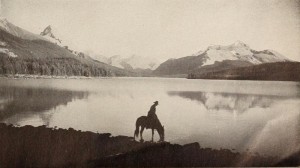
"Western Holiday offered one of those thrills in the sequence of sunrise on Mount Robson. Here Kodachrome caught, with what seemed magic, the first rosy glow on the cold, blue snow, which the continuity of photographic motion permitted to increase, to blossom and, finally, to blaze into a chromatic crown of jewels. To see this on the screen is to enjoy a rare experience. Hamilton H. Jones, in the highly intelligent cutting of his train sequences, gave the student of continuity another of these thrills. Those who are charmed by double turntable accompaniment will recognize the perfection with which an almost impossibly difficult feat of lip synchronization with record scoring has been handled. These are some of the higher spots in a film of unusually high general average. Mr. Jones is a Kodachrome movie maker of proved ability, who has made editing a special art. The film chosen for the first Hiram Percy Maxim Memorial Award will be used by Mr. Jones in his work as a lecturer on the vacation advantages of the Dominion of Canada, although it was made as his own enterprise, entirely at his own expense and not for compensation from a client. It is a part of his professional equipment. Briefly reviewed, Western Holiday carries the audience, via Canadian National Railways, from Victoria, Canada's most westerly metropolis, across the Rocky Mountains back to the Eastern Seaboard. Beginning with city views in Victoria and Vancouver, with strikingly colorful parades of the famous Canadian Mounted Police, we visit tourist centers and make trail trips from them. The camera goes into the interior of a glacier, it finds mountain goats and sheep, it clambers over the Continental Divide on horseback. All through the trip, it studies the progress of trains, weaving in and out of tunnels and over bridges. In his personal presentations of this film, Mr. Jones manipulates effects, such as whistles, bells, train noises and other oddments, with something approaching wizardry. In the face of competition of the highest order, Western Holiday is its own justification of preferment." Movie Makers, Dec. 1937, 602.
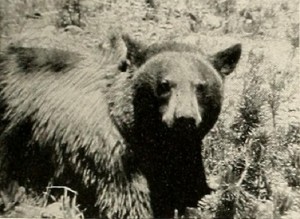
"In making Western Wild Life, Frank E. Gunnell has infused considerable imagination into a film of an essentially factual nature. Broken down into its component parts, this movie is purely didactic — each bird and animal sequence is receded by an identifying title. As a teacher, Mr. Gunnell knows that this type of film is ideally suited for educational use. Technically, it would be difficult to improve Western Wild Life; accurate exposure and focus added to good composition make an excellent film. The closeups of wild birds are some of the finest yet filmed. However, Mr. Gunnell has achieved more than technical excellence, for the film is attractive to naturalist and layman alike. An outstanding characteristic of the film is its highly selective editing. No sequence is too short or too long. Amazing shots of the very rare trumpeter swans provide a fitting climax for a nature film of first rank." Movie Makers, Dec. 1941, 567.
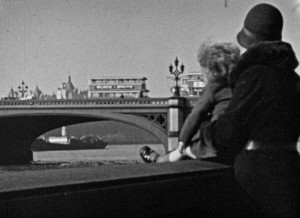
"A tourist film promoting the sights of the London Borough of Westminster." (EAFA Database)
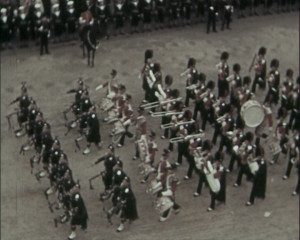
"Film record of the procession along Parliament Street before the Coronation ceremony of George VI, the activities of the spectators in Parliament Street during the ceremony and the procession in Parliament Square following the ceremony, prefaced by footage of street scenes in London the day before the Coronation and concluded by a shot from outside Buckingham Palace." (EAFA Database)
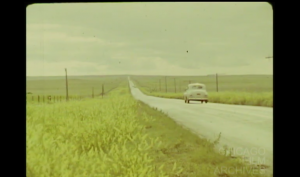
"Edited footage of western scenery on a road trip to Yellowstone Park. Includes scenes of camping and numerous landscapes, Mount Rushmore and the various grounds of Yellowstone with their hot springs and geysers." Chicago Film Archives
A classic surfing film featuring the Hobie-MacGregor Sportswear Surf Team; it features surfers modeling swimwear while they surf.
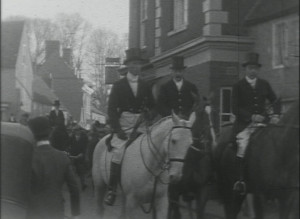
"The Meet of the Whaddon Chase fox hunt on Boxing Day in 1930, with riders on horseback and foxhounds gathering first in Winslow’s market place, attracting a crowd of locals, before heading off to the countryside on this rather grey and foggy day." (EAFA Database)
Total Pages: 299